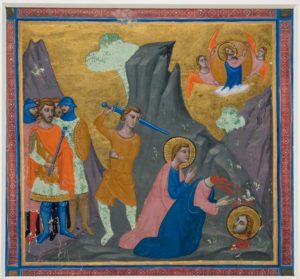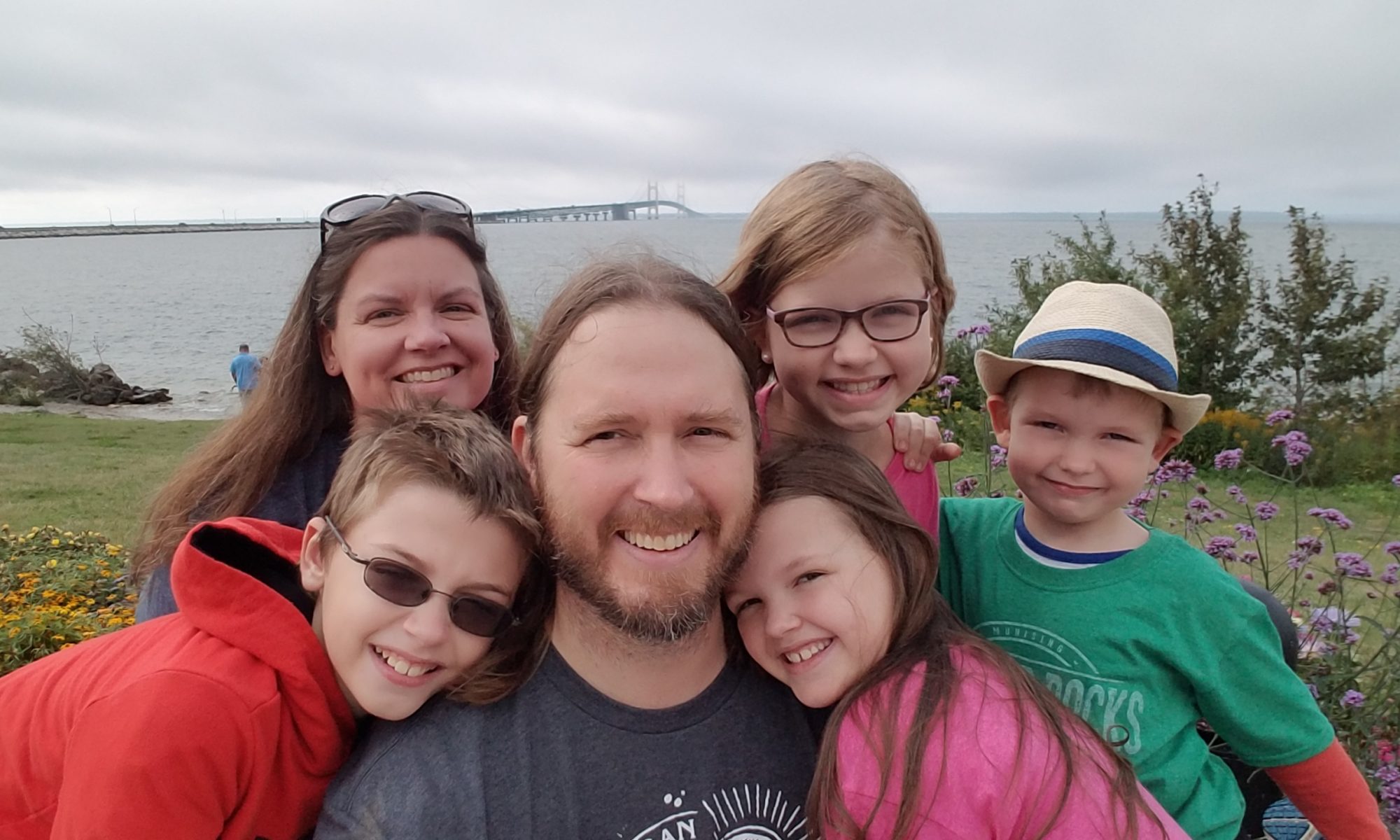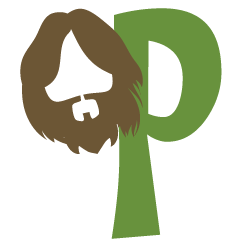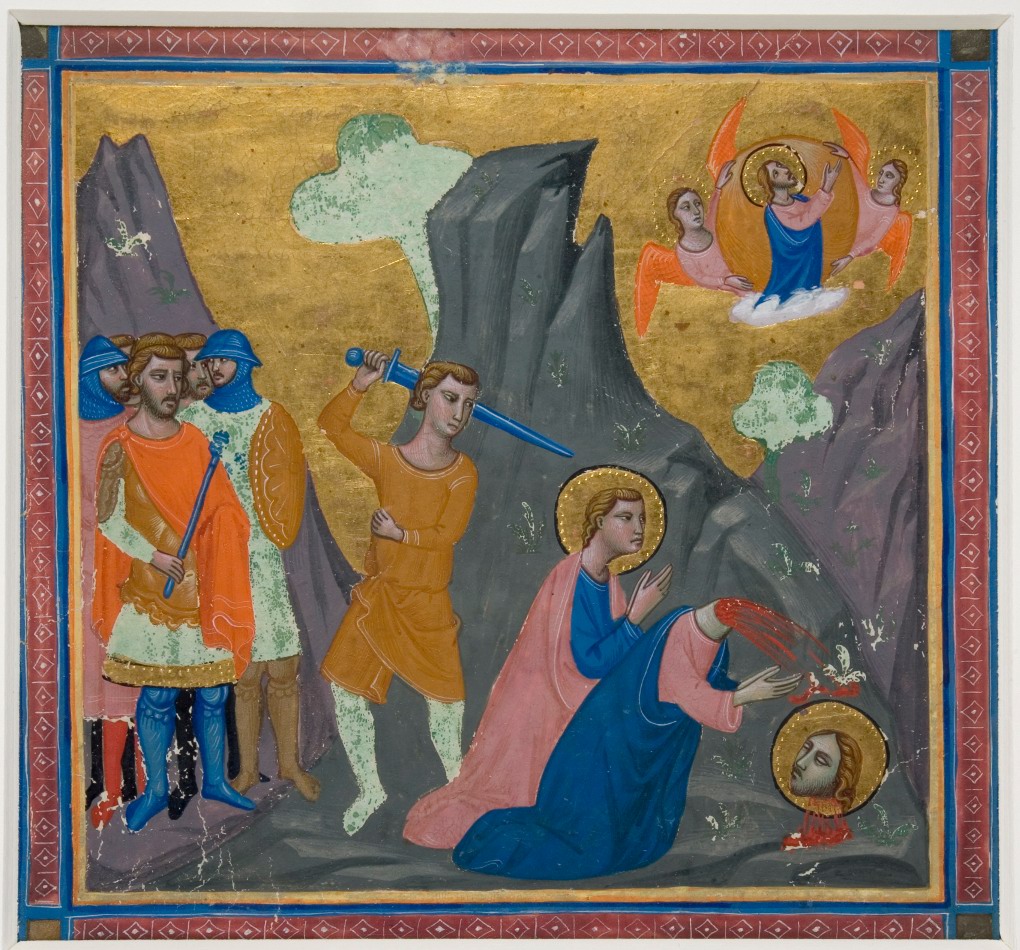
Yesterday, Tuesday July 26, a Roman Catholic Priest, Father Jacques Hamel was murdered while conducting mass at a church in Saint-Etienne-du-Rouvray. The two perpetrators were connected with ISIS. They forced the 84 year old Father Hamel to kneel at the altar before they slit his throat, attempting to behead him. Through his death, Father Hamel joins the glorious company of the martyrs, about whom it is written:
For this reason they are before the throne of God
and worship him day and night within his temple,
and the one who is seated on the throne will shelter them.
They will hunger no more, and thirst no more;
the sun will not strike them, nor any scorching heat;
for the Lamb at the center of the throne will be their shepherd,
and he will guide them to springs of the water of life,
and God will wipe away every tear from their eyes.
-Revelation 7:15-17
Coincidentally, July 25 is what the Christian Church has historically recognized as the Feast Day for Saint James the Greater, Apostle. James and John were brothers and central disciples of Jesus, and he was the first among the 12 disciples to suffer martyrdom as told in Acts 12:1-2. The prayer for this feast day is as follows:
O gracious God, we remember before you today your servant and apostle James, first among the Twelve to suffer martyrdom for the name of Jesus; and we pray that you will pour out upon the leaders of your Church that spirit of self-denying service by which alone they may have true authority among your people; through Jesus Christ our Lord, who lives and reigns with you and the Holy Spirit, one God, now and forever. Amen.
The prayer that, “you will pour out upon the leaders of your Church that spirit of self-denying service…” was answered in the faithfulness of Father Hamel.
I wanted to share just a few things to help us frame our understanding of what happened yesterday. I often find it fascinating to read or listen to Terry Mattingly from getreligion.org as he examines the press and their coverage of religion news stories. In one of his articles, he shares some of the struggles the U.S. press has in covering the details of this murder. Some of the questions Mattingly asks hold deep symbolic meaning for the faithful as we seek to understand this horrible act.
I can think of a few symbolic details. Was the priest literally killed in his liturgical vestments, the vestments in which he will be buried? Did he die trying to protect the Sacraments on the altar? Does his death make him, in the church’s eyes, a martyr?
What damage was done to the church itself? Were there acts of iconoclasm? Did the attackers desecrate the altar with the priest’s blood – an act that has taken place many times through the centuries – which would require (at least in Eastern church traditions) the church to be reconsecrated.
In the midst of a press and a culture that struggles to understand things through a Christian lens (and I don’t say that condemningly, but rather as a matter-of-fact), it is important for us to be intentional about HOW we think about and understand events such as the one that happened yesterday.
One of my seminary professors, Dr. Lawson Stone, continues to be a source of insight for me. On his facebook page, he wrote:
The 86 year old priest who was murdered today, his throat slit while he knelt, did not die by detonating an explosive vest around his body or a bomb in a suitcase in a fanatical moment. He took no innocents with him. He was loving on God’s people, loving on God, loving on the church’s liturgy and life. Little did his murderers know that by killing him on his knees, they had placed him in his most cherished, favorite posture for both life and death. Muslim extremists should take note: THIS is what “martyrdom” is really about. We commend our brother into the keeping of his Lord who loves him wholly.
Note the contrast that Dr. Stone brings out involves Christianity’s commitment to follow Christ as actually being on the receiving end of violence. Jean Duchesne writes a thoughtful article in First Things that touches on this theme. He writes:
Christians can only be shocked and disgusted, like everyone else who deserves to be called a civilized human being. But if they should be more shaken than anyone else, it is not because they are now entitled to think that their Eucharistic assemblies are in the crosshairs, that they are vulnerable to homicidal impulses stimulated by a delirious propaganda. It is because they find themselves confronted, in a way no one can desire or foresee, with the mystery of evil in its most naked brutality, namely the unbearable enigma that love is not loved, as revealed by the cross on which the Lord Son of God accepted to be nailed.
“evil in its most naked brutality…”
And yet, through the tragedy and injustice, with the eyes of faith, Christians have done things like celebrate Holy Days – Feast Days in honor of those faithful people murdered specifically for their faith – martyrs. There is a real tension here. We weep and mourn the injustice, as we cry out with the martyrs under the throne in Revelation 6:10, “Sovereign Lord, holy and true, how long will it be before you to judge and avenge our blood on the earth?” But paradoxically, we also celebrate (with feast days nonetheless) the “victory” of martyrs just like Father Hamel. We do this in spite of, actually, in defiance of the darkness around us.
“What has come into being in him was life, and the life was the light of all people. The light shines in the darkness, and the darkness did not overcome it.”
John 1:4-5



Amen.